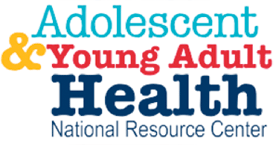Topic :: Program & Policy
-
- This brief provides an annotated list of organizations and agencies that monitor trends in state and federal policies related to the 21 Critical Health Objectives. While multiple policymaking venues exist within the U.S. political system, this brief focuses on federal and state legislation. The brief is available for download here.
-
- This article reviews existing federal data collection efforts and reporting systems to identify what pieces currently exist to support an effective health monitoring system for young adults and what is still needed, and makes recommendations for enhancing the current system by improving data access and quality. Please view the abstract here: Brown, B.V. (2008). A federal monitoring system for early…
-
- Healthy People 2010 included a broader focus on adolescent health and included 21 Healthy People 2010 objectives, identified by a national panel as critical to adolescent and young adult health. These objectives span six areas: mortality, unintentional injury, violence, mental health and substance use, reproductive health, and the prevention of chronic disease during adulthood. NAHIC review progress on these objectives, as…
-
- Adapted from Improving the Health of Adolescents and Young Adults: A Guide for States and Communities, this brief provides an overview on how to use data to shape health programs for youth. Supplemented with tables and case studies, this brief reviews major data sources and offers guidance for developing a youth profile and conducting a needs-and-assets assessment based on the 21…
-
- Improving the Health of Adolescents & Young Adults: A Guide for States and Communities is a companion to Healthy People 2010, the U.S. Department of Health and Human Services’ comprehensive, nationwide health promotion and disease prevention agenda. The document helps communities and individuals translate the Healthy People 2010 objectives that are key to adolescent health and safety into a vision…
-
- This “classic” series provides foundational knowledge, historical background and practical suggestions to guide incorporation of positive measures into adolescent health assessments. NAHIC conducted a comprehensive analysis of positive youth development approaches and measures, leading to the three papers, based on work supported by the W.T. Grant Foundation. The first paper, Developing a Conceptual Model to Select Indicators for the Assessment…
-
- This article assesses the relationship between income and a broad set of health status, access, and utilization indicators. The authors used the most current nationally representative data available, including new variables, not previously available, in domains including mental health status and dental health services. These new data permit a more comprehensive assessment of income’s relationship to health status and access…
-
- This was the presidential address at the SAM 2003 meeting focusing on the future of adolescent health. NAHIC Director Dr. Irwin reviews the history of the adolescent health field, presents a case for a positive view of adolescence, and makes recommendations for future research, policy and workforce training. Irwin C. E., Jr. (2003). Presidential Address: Adolescent health at the crossroads:…
-
- This monograph describes the environment in which children live and presents diverse measures of wellbeing, as well as traditional measures of health. Topics addressed include demographic characteristics, school environment, health care access and utilization, dental health, mental health, obesity and victimization. The document aims to inform professionals, program directors and policymakers concerned with the health and well-being of the middle…
-
- This summary synthesizes the proceedings of an expert meeting to begin developing a national health agenda for middle childhood. Meeting participants representing diverse disciplines and stakeholders discussed a range of issues, including the role of families, schools, communities, business and the health care system in promoting the health of this population. With guidance from the participants, Policy Center staff identified…
 University of California San Francisco
University of California San Francisco


